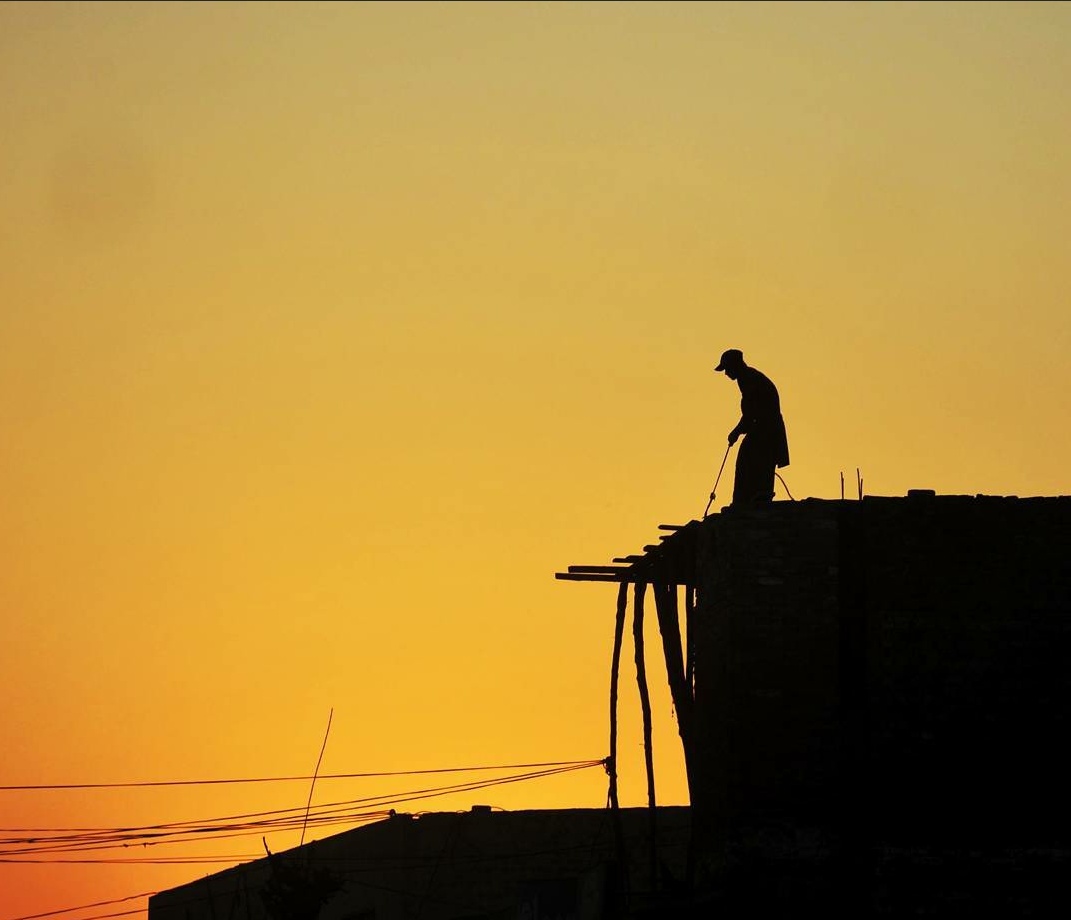Out of the 20 million people held captive by feudal lords, factory owners and aristocrats around the world in bonded labour, over 85% of them reside in South Asia. To many of the readers, the term “bonded labour” would be unfamiliar but to the people who are either familiar or living within it, it is nothing less than a hell.
Ever since the history of human civilization, the serfs, the landless, the peasants and the meek have been exploited by feudal lords and land owners. Even today, millions of bonded labourers are being exploited due to a lack of political standing or voices in social activism, especially in Pakistan where legislation is lax and implementation is limited.
Despite the chains tightening around them, there is little awareness of acknowledgement of the pain these labourers go through. This article will attempt to bridge the gaps between existing realities and the “inalienable” rights and integrity of these humans bound in merciless bondage.
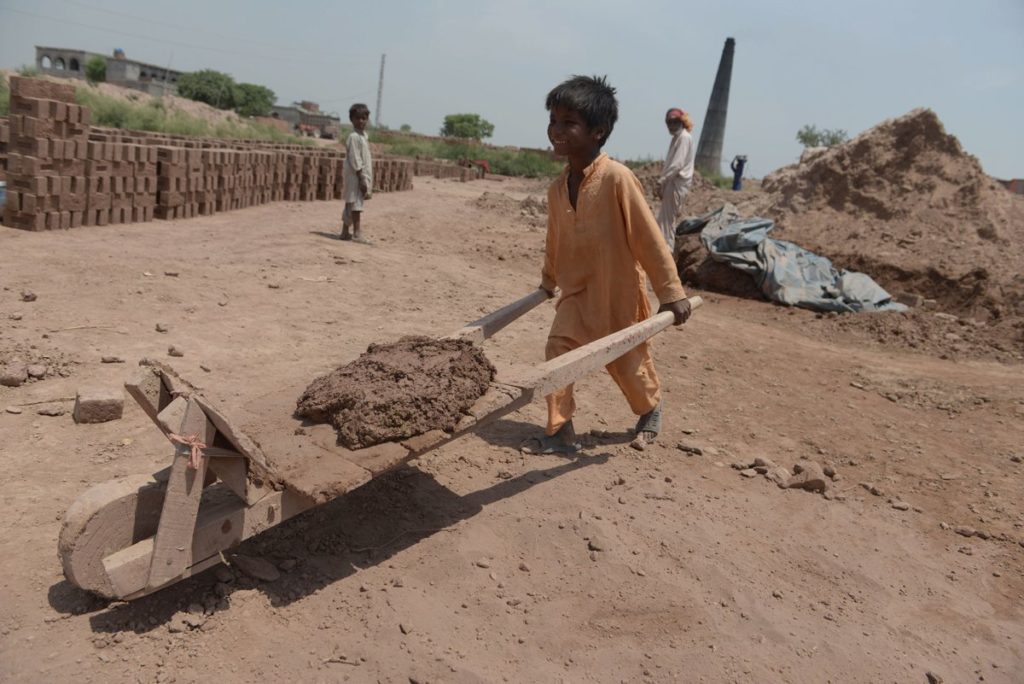
Slaves Paraded As Workers
Hiring employees and workers is a fundamental principle within any economy and has been paramount to the development of human civilizations. As long as this relation between the employee and the employer is clean of any exploitation, it is respectable and legally observable in all domains of life.
However, the intrinsic problem with bonded labour is its establishment on the very pillars of indifferent exploitation. In documents and inquiries, these labourers are written as workers of the industry to avoid legal repercussions. In most cases, labourers are not allowed to leave the installations and even kept away from the eyes of the public. Hence, it is immensely important to identify the lines that differentiate bonded labour from fair labour.
United Nations and the International Labour Organizations identify slavery as “the status of a person over whom any or all of the powers attaching to the right of ownership are exercised”, literally using them as objects instead of actual people with rights. Let us take a closer look at the onset of bonded labour and its consequences.
It All Starts with A Debt
The cyclical process begins usually with a debt being given to labourers by a employer or a landlord in advance for any amount of work. This agreement comes with the mutual understanding that this advance payment, known as peshgi in most regions of Pakistan, will be paid by the labourers by providing their services through labour.
In theory, this loan is payable over a limited amount of time by the labourers. However, in practice, they find it either incredibly difficult or impossible to pay it back, trapping them in an gruesome cycle of forced labour and ever-increasing debt.
The Debt Trap Never Ends
Due to the unfair and often unwritten terms of the contract, entire families of labourers are pushed to work for the employer to make ends meet. The work is overly strenuous and most of the negligible pay is expended on paying back the loan. What further complicates is the fact that the debt continues to increase as the labourers “use” the owner’s land and “eat their food“.
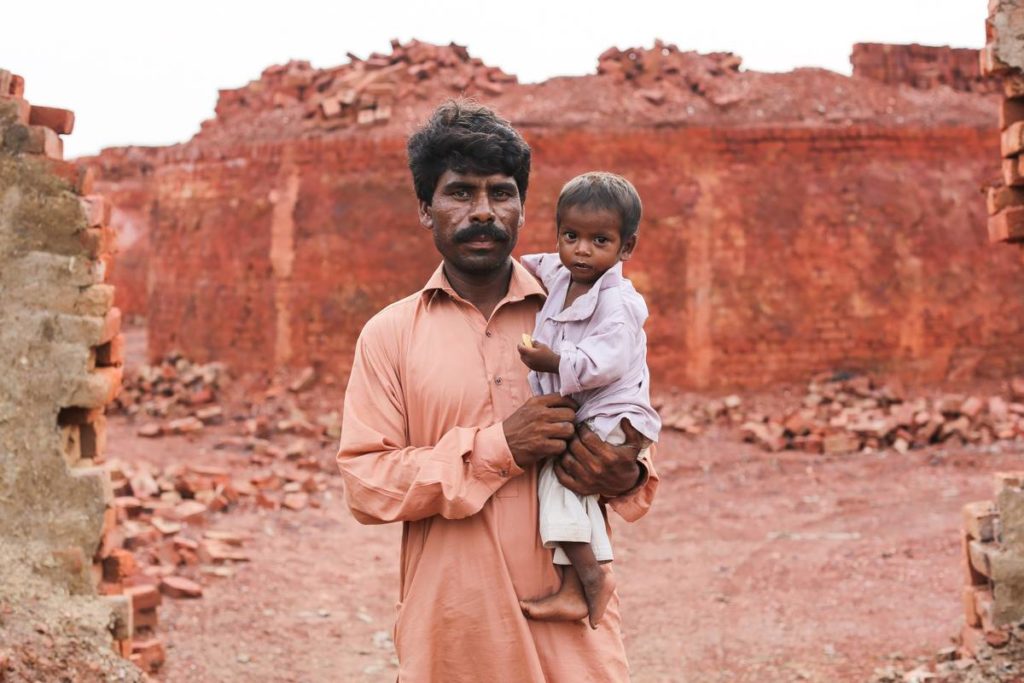
The debt must be paid by the entire family of the labourer even if they pass away or the main earner suffers permanent injury that bars them from further work. In many cases, even children of deceased parents are expected to work along their family members to support the family’s struggle to pay back the exorbitant loans.
Death Is Not A Relief
While one would expect that the demise of a labourer can grant him and his family a breath of relief but that is rarely the case. The debt of the family is transferred from one generation to the other and many families remain enslaved for decades as the debt continues to pile up exponentially.
In such instances, the owners have an absolute control over the fate of the next generation as well. They manipulate the families to control whether the children go to school, the family members get medical attention and even how the family effectively plans their future. Tales of sexual and physical violence are rampant and there is little remedy available, especially with the fear of immediate retribution by the owners.
Is there no remedy?
It would be unfair to point out only the horrors of bonded labour without mentioning the laws that exist to protect these vulnerable individuals. Under the Palermo Protocols and the ILO Forced Labour Convention, bonded labour has been identified as a criminal offense, making offenders liable for strict punishments and fines to deter such bondage.
At the national level, the Constitution of Pakistan declares both slavery and forced labour to be prohibited in the law and holds the integrity of man to be inviolable. Furthermore, a successive series of legislative amendments and Acts have paved the way for structural reforms but none have followed suit, leaving millions of bonded labourers anxious of a future where their fates may never change.
The pandemic has further aggravated the situation as dwindling economic prospects intermingle with increasing inflation to push more people under the poverty line. With more and more people desperately seeking employment or financial opportunities, it becomes incredibly hard for victims to avoid being exploited; they simply cannot bite the hand that feeds them.
The Failure of Justice
Despite the existence of laws, limited execution by authorities is rampant, especially in Pakistan where bonded labour, despite being outlawed years ago, continued to exist and proliferate. The socio-cultural power of the culprits and land-owners grants them an impunity that makes them practically invulnerable to the writ of the State. The existence of corruption and nepotism further aggravates the issue as police and judicial officials either refrain from filing cases against offenders or require bribes that prevent victims from coming out.
In simpler words, commercial interests of the political elite reign supreme over humanitarian concerns and even the state machinery is sometimes maliciously employed to silence the voices of victims, as in the case of the Mica mines where deaths of children were intentionally denied by officials in power.
In the recent years, non-governmental initiatives have also taken up arms against bonded labour, mostly led by freed labourers or passionate activists from different regions of Pakistan. Unfortunately, going against powerful offenders comes at the price of being ostracized, threatened, maimed and even killed.
It is relevant to add at this point that when the author attempted to contact the owners of installations for anonymous photographs of the sites and the labourers, he was threatened by physical violence as well. The callous and aggressive responses to such attempts of recording are not new and only contribute towards making matters worse.
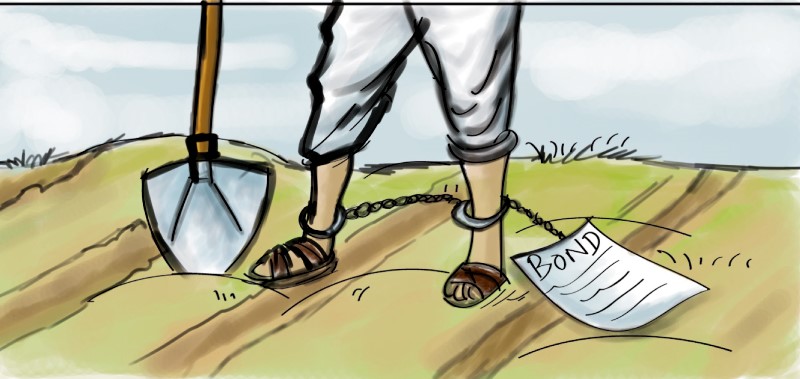
Debt and Desperation – Are We Missing Something?
In a series of anonymous interviews of the workers at an undisclosed brick kiln conducted by the author, a haunting picture regarding the realities of bonded labour was painted. The picture reeks of oppression and cruelty, most of which is rendered without discrimination with little precedence to the workers’ health or safety over the quantity of mass-produced products. However, within the canvas, we see a tale of desperation etched along with the hues and cries of activists and authorities.
Please make sure no one hears of this, they will do things to me that you cannot even comprehend”
A worker predicts the possibility of violence while nervously pulling his child closer.
Most of workers that are present at brick kilns or other avenues of bonded labour are either immigrants from other regions of the country, making them vulnerable to the writ of others maintaining a power hegemony in the community. Facing similar situations, people who belong to lower castes of Muslims or any religious minority are also more exposed than others.
In other instances, many labourers may also belong to the same community as the owner or sub-contractor of the workplace, creating a personal link that may tie them down at times. However, in all these cases, the workers feels conflicted yet obliged to work for their superiors as they have “helped them in hard times”. To many, they are simply trying to work their debt off, unknown of the illusion that they are stuck in.
Both my wife and I work at the brick kiln. We have to do this because we cannot watch our children starve.
Unknown to most policy makers and advocates, bonded labourers are bound by more than just debt but grim realities as well.
What most people fail to notice when advocating for solutions to the bonded labour problem is that there are little alternatives available for labourers to provide for themselves. Most of them have little to no education or technical skills, leaving crude labour, even if in bondage, to be the only viable source of steady income.
At the same time, due to their status as immigrants and the lack of existence of any widespread programs, schemes or opportunities to provide for social mobility, these labourers may even find themselves more inclined to look for such opportunities of “long-term employment” as economic situations deteriorate.
Yes, I know it’s terrible and I deserve better but there is no other choice. My family would have to beg for scraps if we leave this job.
Workers caught in bonded labour have little to no alternatives.
However, this line of argument, under no circumstances, supports the notion that bonded labour should continue to exist. It only aims to point out how there are much more factors involved when it comes to the eradication of a systematic and institutionalized network of forced labour and such decisions must not be taken in haste but through sustainable actions that allow oppressed workers to be rehabilitated adequately.
I was born in the brick kiln and I have been working here since; the work never stops.
There exist entire generations that have been born into the modern-day slavery.
The Struggle Continues
Bonded labour has existed for effectively decades, but so has the resistance against it. Unfortunately, as is with most instances of retaliation, violence and brutal suppression has been the response. Yet despite the fear, threats and oppression, it is important for us to value the lives of those that have struggled against the horrors of bonded labour.
Iqbal Masih – The Child That Paid The Price of Resistance
Bonded in debt after his mother needed money for a critical operation at the young age of five, Iqbal worked as a labourer at a carpet factory in Pakistan. He soon escaped from the hands of his cruel owner and met the members of the Bonded Labour Liberation Front that provided him with the necessary platform to channelize his voice.
Iqbal then proceeded to not only join but lead demonstrations all over the country for complete abolishment of bonded labour, especially for hundreds of thousands of children who are caught in the vicious cycle. As national and international media rallied around his call, Iqbal became a symbol of hope and strength for millions.
However, such a vibrant voice was spelling doom for the owners of numerous installations that relied upon bonded labour and terrible circumstances unveiled themselves. At the age of 12, Iqbal was murdered under mysterious circumstances. His death was mourned internationally and his services were recognized posthumously with the World’s Children Prize for the Rights of the Child. Readers can learn more of his life by reading this graphic novel.
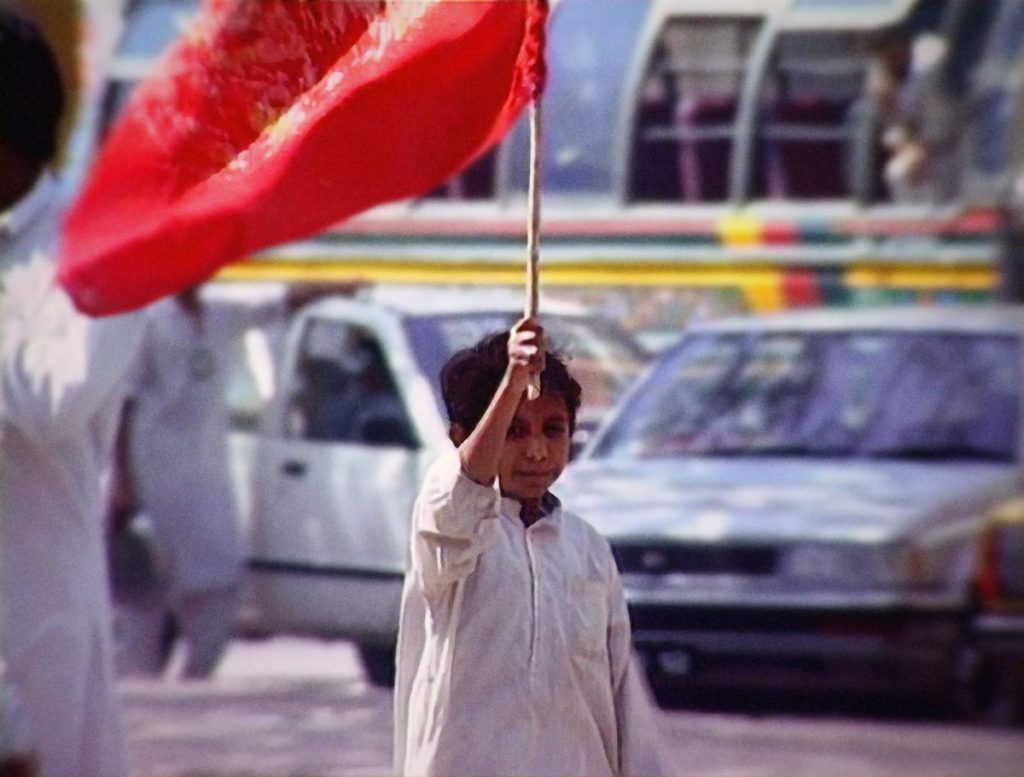
Syeda Ghulam Fatima – The Modern Day Harriet Tubman
Fatima is currently leading the Bonded Labour Liberation Front in Pakistan and has been phenomenally active in her contributions towards the eradication of bonded labour. In her pursuit, she has even faced attempts at her own life, many of which have left her gravely injured.
Thousands of men, women and even children have approached Fatima for help and none have been refused. Currently, her organization is striving to build a freedom center in Lahore where workers are not only provided legal aid but also have a chance at rehabilitation.
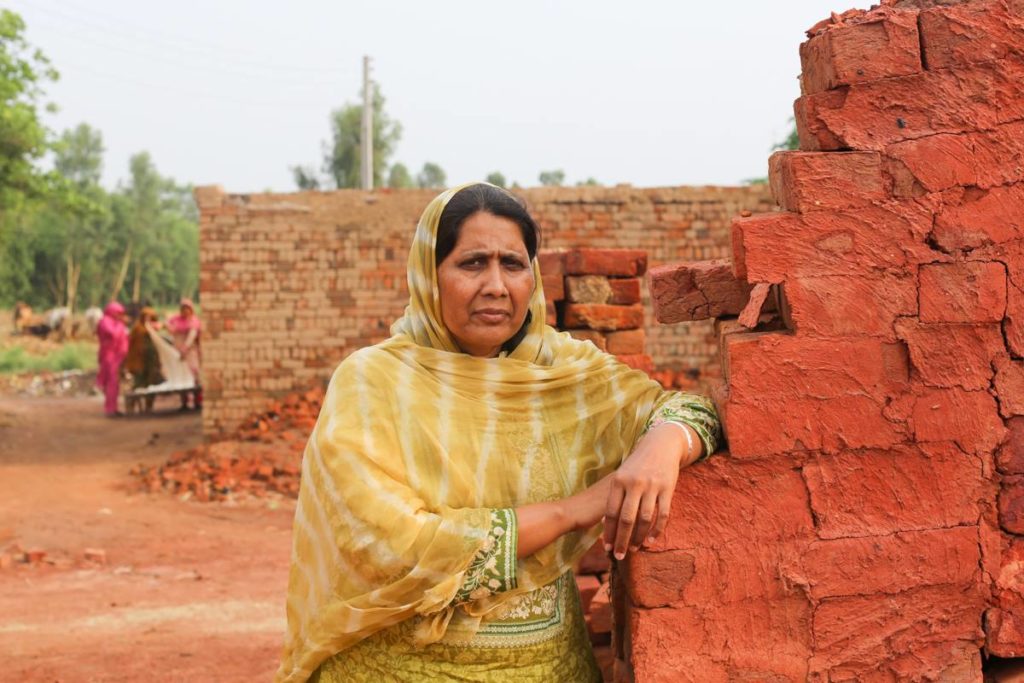
The Chains Tighten Yet They Must Break
With over 3 million people estimated to be living in bonded labour just in Pakistan, it is evident that a lot more needs to be done before a better world can be imagined. With this many human lives on the line, a comprehensive and effective implementation of pre-existing agendas is the need of the hour.
However, before reforms can arrive, it is far more important to ensure a democratic and fair culture of governance where the interests of landowners can be filtered from those of the common public. Only then it would be possible to address the institutionalized issue of bonded labour, especially in the sub-continent.
At the same time, we, as individuals, must make ourselves aware of horrors that exist around our societies as it is not the lack of voices that hinders and inhibits social change but the lack of listeners.
